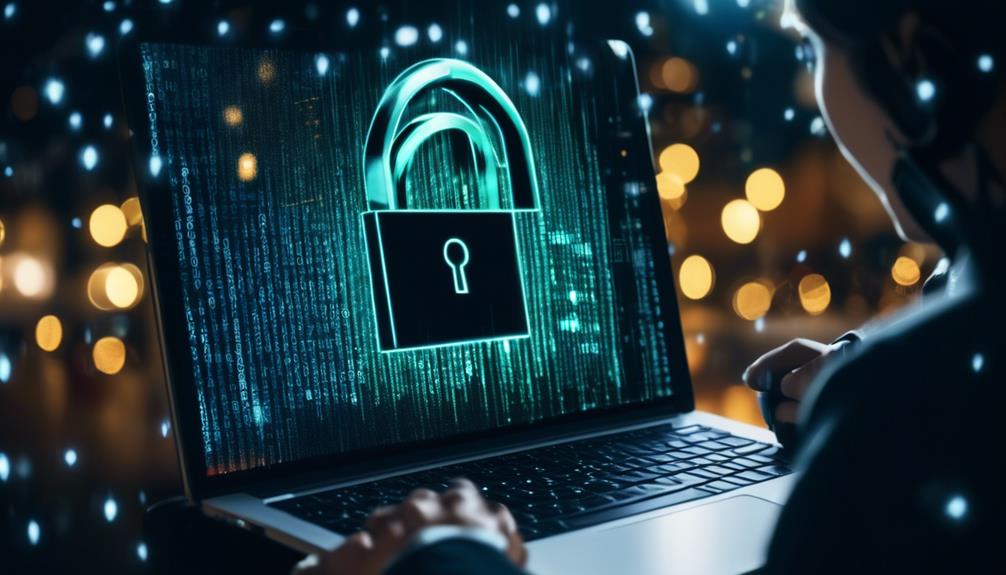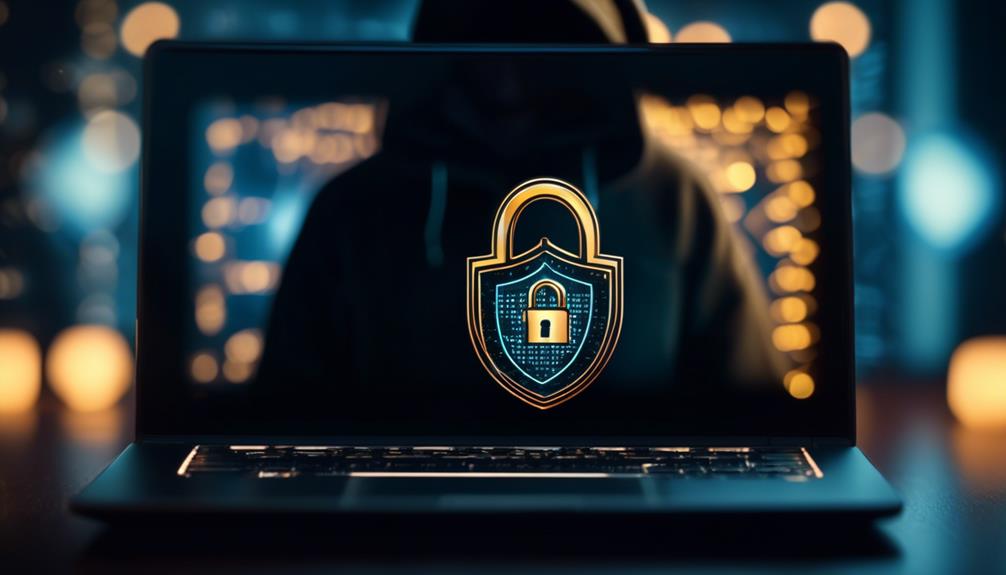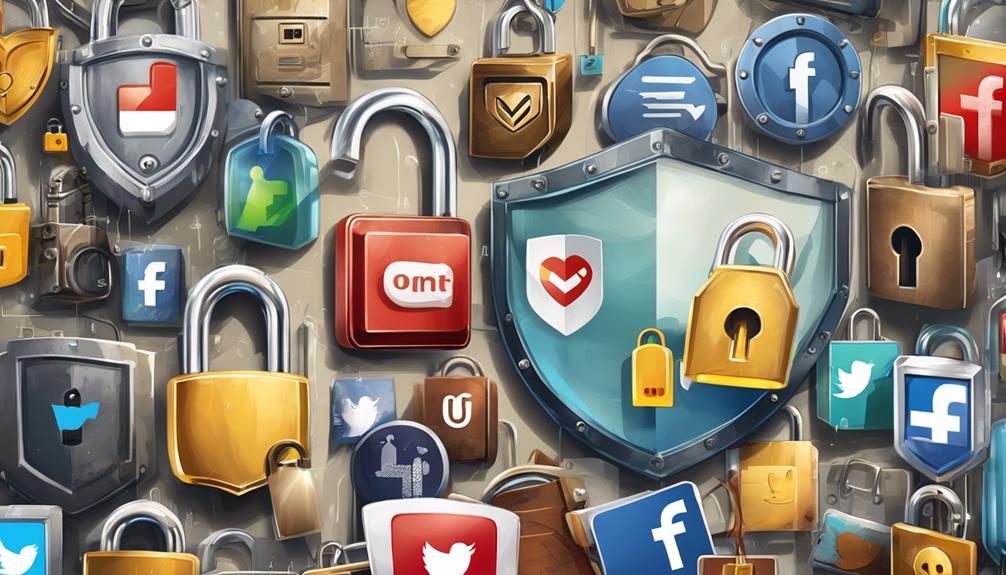In today's digital era, protecting your online privacy is essential, like locking your doors at home. Cyber threats and identity theft are increasing, making fortifying your online privacy crucial. How can one safeguard their digital identity and personal information in the vast internet expanse? Individuals can take proactive measures to bolster their online privacy and thwart identity theft. Understanding these strategies is vital for securely navigating the digital landscape.
Privacy Setting Strategies Against Identity Theft

In order to thwart identity theft, individuals should regularly adjust their social media privacy settings. This involves managing who can view and interact with their posts and limiting visible personal information. Moreover, enabling two-factor authentication adds an extra layer of security. Using a virtual private network (VPN) can further safeguard online activities. Regularly monitoring credit reports and financial accounts is essential for detecting unauthorized activity. Additionally, using strong, unique passwords and considering a password manager adds security. By implementing these strategies, individuals can reduce the risk of identity theft and better protect their personal information online.
Social Media Privacy Settings
Regularly adjusting social media privacy settings is crucial for enhancing online security and limiting personal information visibility. By taking proactive measures, individuals can reduce the risk of data compromise and exploitation. Here are some essential strategies for optimizing social media privacy settings:
- Enable Two-Factor Authentication: Adding an extra layer of security to social media accounts through two-factor authentication can significantly reduce unauthorized access.
- Regularly Review and Update Privacy Settings: Stay informed about platform privacy policy changes and adjust settings to maintain control over personal information visibility.
- Limit Audience for Posts and Information: Utilize privacy features to restrict the audience for posts and shared information, ensuring that sensitive details are only accessible to trusted individuals.
- Exercise Caution with Friend Requests: Be discerning when accepting friend requests or connections from unknown individuals to mitigate the risk of falling victim to phishing scams or inadvertently sharing personal information with malicious actors.
Personal Communication Scam Prevention and Education

Preventing personal communication scams is vital. Equipping individuals with knowledge and skills is essential. Understanding common scam techniques helps. This includes phishing emails, fraudulent phone calls, and social engineering attempts. Recognizing and responding to potential scams is crucial. Verify the sender's identity before sharing personal information. Utilize secure communication platforms to reduce the risk. Empowering individuals to recognize and prevent scams is integral. It fortifies online privacy and safeguards against identity theft.
Online Privacy Protection Measures
To enhance online privacy and prevent identity theft, individuals must learn to identify and prevent personal communication scams. They should consider implementing these measures for protection:
- Use strong, unique passwords for each account and enable two-factor authentication to add extra security.
- Exercise caution by avoiding sharing sensitive information, being wary of phishing attempts, and refraining from clicking suspicious links.
- Regularly monitor credit reports, financial accounts, and social media activity to promptly detect unauthorized access.
- Utilize a Virtual Private Network (VPN) when accessing sensitive information online to secure data.
Identity Theft Prevention Techniques

To prevent identity theft effectively, use strong, unique passwords and enable two-factor authentication for online accounts. Also, be cautious with sharing personal information online, avoid unsecured websites, phishing attempts, and suspicious links. Safeguard personal documents and consider credit freezes for added protection.
Strong Passwords
Creating strong and unique passwords for every account is crucial for preventing identity theft and maintaining online security. To enhance your online privacy, consider using a combination of letters, numbers, and symbols in your passwords. Avoid using easily guessable information like birthdays or pet names to increase their strength. Using a password manager can securely store and manage your passwords, making them inaccessible to cybercriminals. Regularly changing your passwords minimizes the risk of unauthorized access and maintains their integrity. Implementing these practices can significantly reduce the risk of identity theft and enhance your online privacy.
Two-Factor Authentication
Implementing two-factor authentication provides an additional security layer to online accounts, making unauthorized access more challenging. This security measure entails a second form of verification, like a code sent to your phone, to access your account. By adding this extra step, two-factor authentication significantly reduces the risk of unauthorized access to personal information. Consequently, it fortifies online privacy and protects against identity theft. It is available on various platforms and is highly recommended to safeguard sensitive data proactively. Two-factor authentication serves as a robust defense mechanism, deterring potential identity thieves and enhancing overall online security. Embracing this method empowers individuals to take proactive steps in securing their digital presence and mitigating the risk of falling victim to identity theft.
Secure Browsing
After setting up two-factor authentication, individuals can further boost security by practicing secure browsing. To do so, they should use unique passwords, be cautious when sharing personal information, review credit reports regularly, and avoid public Wi-Fi networks. Also, they should keep their devices and software updated to protect against online threats.
Digital Privacy Safeguards

Ensuring digital privacy is crucial to protect personal information from theft. Using a password manager is essential for creating and storing strong, unique passwords. Additionally, enabling two-factor authentication adds an extra layer of security. Using a virtual private network (VPN) and safe browsing habits can also help safeguard sensitive information from potential threats.
Password Manager Security
Securing digital privacy and preventing identity theft requires a reliable password manager. Prioritize encryption and data security when choosing one. Additionally, follow these best practices: Store and manage credentials securely. Create strong, unique passwords for each account. Enable two-factor authentication for added security. Regularly update and review stored passwords for potential risks.
VPN Protection
VPN usage encrypts and protects online activities, ensuring digital privacy and safeguarding data from potential threats. It creates a secure connection over public networks, shielding data from potential hackers and identity thieves. In addition, individuals can browse the internet anonymously, preventing websites from tracking their online activities. Furthermore, VPNs allow access to geo-restricted content and ensure privacy when using public Wi-Fi networks. These tools are essential for protecting digital privacy and ensuring secure communication over the internet. By utilizing a VPN, individuals can protect themselves from identity theft and other online threats, making it an indispensable tool for fortifying online privacy.
Safe Browsing Practices
When it comes to online privacy, VPN protection is important. Safe browsing practices are also crucial.
- Use secure, encrypted websites (HTTPS) to prevent data interception when sharing personal information online.
- Avoid clicking on suspicious links to protect against identity theft and phishing attempts.
- Refrain from sharing sensitive information on unsecured websites to prevent unauthorized access to personal data.
- Enhance online account security by using strong, unique passwords and enabling two-factor authentication.
- Implementing these practices is essential for safeguarding online accounts and securing personal information, especially when using public Wi-Fi networks.
Cybersecurity Measures for Personal Privacy

In order to boost personal privacy, individuals should use strong, unique passwords and enable two-factor authentication. Regularly monitoring credit reports, financial accounts, and social media for unauthorized access or suspicious activity is also crucial. Moreover, it's important to avoid sharing personal information on unsecured websites and to be cautious of phishing attempts and suspicious links. Implementing device passcodes, keeping software updated, and using secure Wi-Fi networks are additional cybersecurity measures to protect electronic devices. Furthermore, considering the use of a virtual private network (VPN) and freezing credit can provide an extra layer of security when accessing sensitive information online. These measures help fortify online privacy and reduce the risk of identity theft or unauthorized access to personal information.
Frequently Asked Questions
How Can I Stop Identity Theft Online?
To prevent online identity theft, prioritize security by using strong, unique passwords and enabling two-factor authentication. Be cautious of cyber threats and regularly monitor accounts. Additionally, avoid sharing sensitive information and safeguard personal data offline.
How Can I Protect My Identity and Privacy Online?
In order to safeguard your identity and privacy online, it is crucial to use strong passwords and adjust privacy settings. Additionally, employing data encryption and regularly monitoring your accounts are essential steps. Remaining vigilant against suspicious links and shredding personal documents can also enhance your online security. Consider utilizing a credit monitoring service for added protection.
What Is the Best Way to Protect Against Identity Theft?
To shield against identity theft, it's crucial to employ secure passwords and enable two-factor authentication. Additionally, utilizing data encryption adds another layer of protection. These measures are essential for safeguarding personal information and preventing unauthorized access to sensitive data.
Which Option Demonstrates Ways of Protecting Yourself From Online Identity Theft?
By using strong passwords and encryption, and being cautious of phishing scams, you can protect yourself from online identity theft. Additionally, enabling two-factor authentication and privacy settings are effective measures. Prioritizing online security is essential.
Conclusion
In conclusion, it is essential to fortify online privacy to prevent identity theft. According to the Federal Trade Commission, over 1.4 million cases of identity theft were reported in 2020. This resulted in an estimated $3.3 billion stolen from victims. By implementing strong privacy settings, educating oneself about scams, and using cybersecurity measures, individuals can significantly reduce their risk of falling victim to identity theft. Additionally, they can protect their personal information from being compromised.



